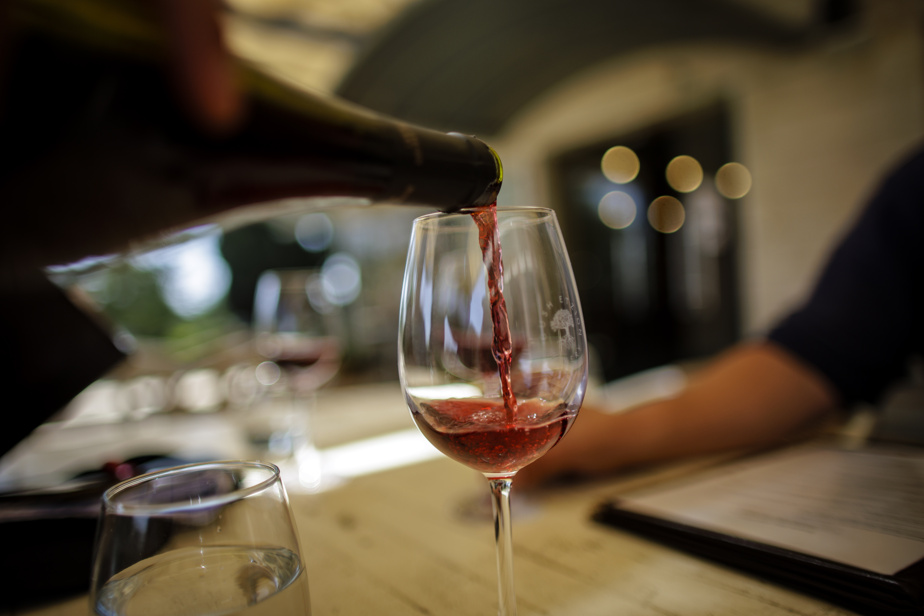While it was, admittedly, a little embarrassing to order the first bottle at the top of the wine list, not so long ago, it is now seen as a responsible gesture. Same thing for wine by the glass, more popular than ever. Which shakes the business model of many, since the effects are felt from the glass to the vineyard.
Just one glass of wine instead of two. The absence of alcohol on lunch orders. A rise in prices and awareness of the dangers linked to excessive consumption. All reasons that can explain why consumers who sit down at restaurants order wine in smaller quantities.
“What we see is that there is less alcohol consumption than before the pandemic. At lunchtime, it has become less and less acceptable to drink it,” observes Éric Lefebvre, president and CEO of MTY Food Group (Bâton Rouge, Mikes, Ben
He is not the only one to make this observation. “Before, let’s say that people had two glasses of wine, now they will have a glass [of sparkling water] when starting, and a glass of wine while eating,” indicates for his part Jean Bédard, president and head of the management of Groupe Grandio (La Cage – Brasserie sportive, Moishes).
Éric Lefebvre also recognizes that the price of wine offered on the various menus, particularly that sold by the glass, has increased. “Wine by the glass is a great way to manage volume and get a certain profit margin that you don’t have elsewhere,” he says.
If sales are slow, the cellars remain well stocked.
The agencies that represent winegrowers and sell wine, whether to the SAQ, restaurants or specialized stores, are therefore stuck with their stocks.
“Selling the same quantity of wine is twice as difficult,” admits Julie Audette, co-owner of the agency Le vin dans les voiles.
The agency mainly sells its wine to restaurateurs, but it may have to adjust its business model to focus more on its customers who buy its bottles through private import, a niche less affected by inflation.
For Le vin dans les voiles, this inevitably means a reduction in orders from producers. “We had difficult discussions with winegrowers,” confides Ms. Audette. The agency sometimes reduces quantities by half, especially those of more expensive vintages. “We don’t like doing this, we never had to do this, but now, we have no choice if we want to save our company. »
Liudmila Terzi is the head of the Les Filles du Vigneron agency, which specializes in importing Moldovan wine. She also notes this slowdown. In this context, the entrepreneur is delighted to offer her products in cases of 6 bottles rather than 12, a format more popular with her customers these days, both for restaurateurs and individuals.
“It’s less of a strain on their budget,” she says.
“And it’s certain that cheaper wines are coming out faster this year,” confirms Liudmila Terzi, who is also a winemaker. She is co-owner of Domaine Beauchemin, in Yamachiche.
In both cases, the year 2023 will have been very demanding.
The cascade effect, inevitably, reaches the winegrowers.
At the end of November, Domaine du Nival put its cases of wine on sale for private customers on its site. All the wines generally sell out in a few minutes – we have even seen bottles resold illegally on Facebook groups because they are so popular.
This time, the Pinot Noir took more than a week to find a buyer.
It is nevertheless very fast and would be the envy of most Quebec winegrowers. But it’s unusually slow for Nival.
“We are returning to a more normal and probably healthier situation for everyone,” says Matthieu Beauchemin, co-owner of the vineyard located between Sorel and Saint-Hyacinthe.
“It’s probably the situation we were experiencing before that was abnormal,” he explains. To see Quebec vineyards selling hundreds of cases of wine in two or three minutes, whereas in the early 2010s, you almost had to beg people to buy Quebec wine. »
“There was a huge enthusiasm that we felt in 2018, 2019, but which exploded during the pandemic,” continues the winemaker, “with all the movement behind buying local and the fact that people had more money available for non-essential expenses. At the same time, several expenses were no longer possible. So wine and gastronomy have taken an important place. »
Nival wines are highly sought after by restaurateurs. Matthieu Beauchemin, who, as required by Quebec law, must make deliveries of his wine himself, is well placed to see that certain establishments are going through difficult times. And order less wine. The slowdown, he specifies, is mainly observed in “mid-range” establishments.
Nival sells half of its production to restaurants. The other bottles are sold directly to customers as well as in certain specialized stores.
According to him, “for the past year, there has been a gradual decrease in excitement.”
This is confirmed by Pascale Rémond, co-owner of the Les Minettes grocery store, in Laval.
“Two years ago, winegrowers were being robbed,” she relates. This is no longer the case. »
Pascale Rémond confirms that this relaxation imposes a somewhat healthier sales climate for these vintages that people are snapping up. In his business in Vieux-Sainte-Rose, this gives him time to welcome his customers rather than paying for purchases on the chain, in a hurry, as soon as the store opens.
The craze is still there for Quebec wine, she says, but people are buying a little less and choosing a little more, looking at the price of the bottle.
